Description
The behavior of different subwoofer configurations (far field vs. near field) and subwoofer types (monople vs. dipole) is investigated. The in-room response was equalized using Audyssey MultEQ XT32 with the mandatory 3 runs. The Audyssey mic was left at location 1 (main listening position - see floorplan) for all 3 runs. Then the in-room response was measured at the main listening position and 60cm to the left and the right.
Measurements were taken with FuzzMeasure 3.2.4. Underlying data in frequency plots has 1Hz resolution.
Spectrograms were generated in REW V5.00. using impulse responses from location 1. Window length 300ms.
Floorplan
1 pixel = 1cm
Blue = Main Speakers
Dotted = Subwoofer
1–3 = Mic locations
A = Single monopole subwoofer configuration
B = Dual monopole subwoofer configuration, optimized for low seat-to-seat differences
C = Location of single near field subwoofer
D = Location of dual near field subwoofer
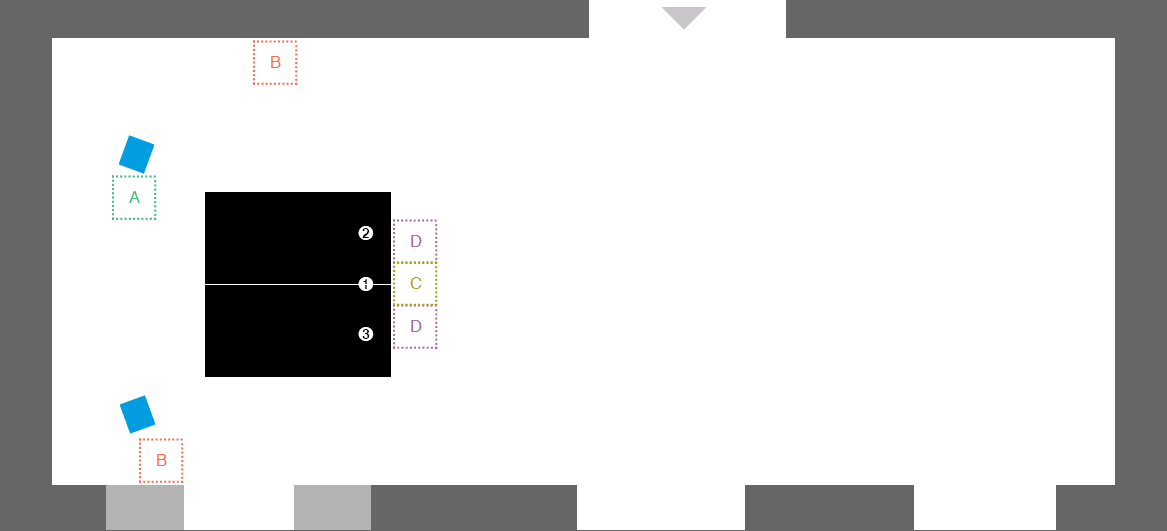
Measurements
Red curve = Mic location 1
Grey curves = Mic locations 2 & 3
Blue curve = Response of MultEQ filter.
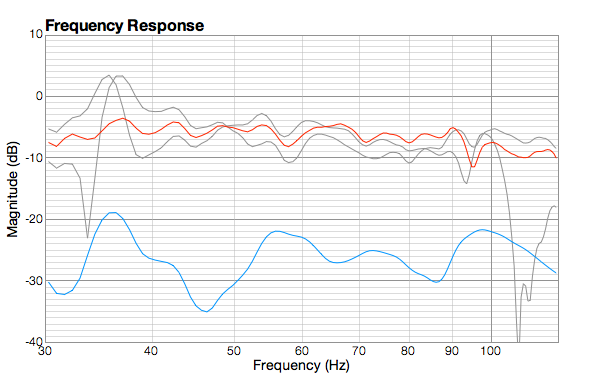
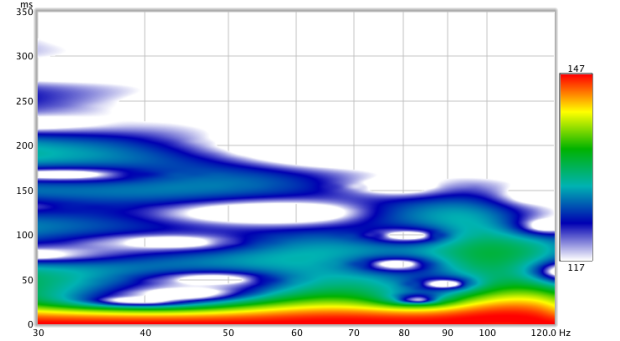
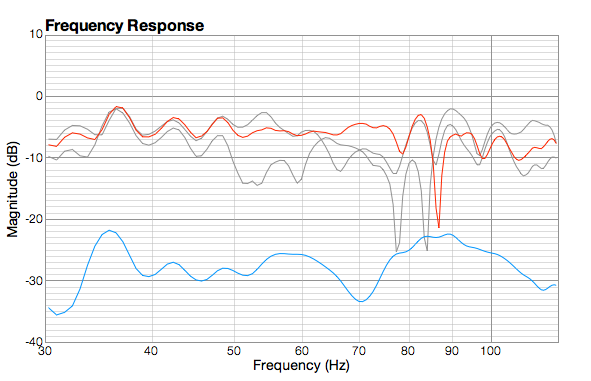
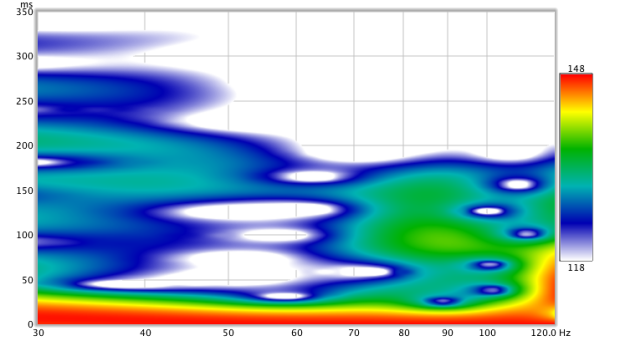
3. Single monopole, near field
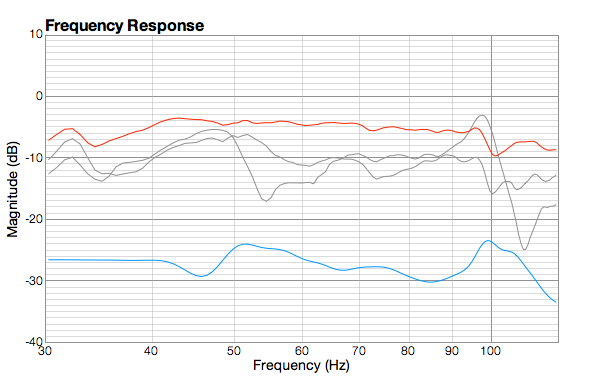
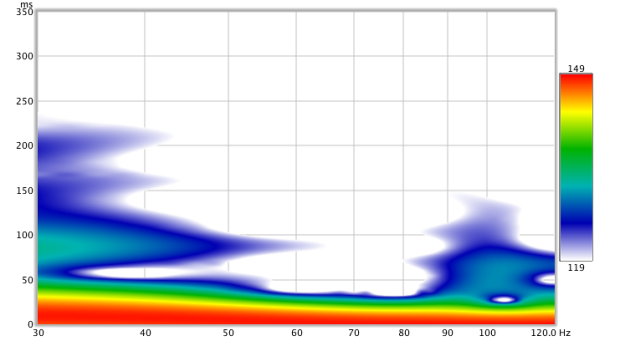

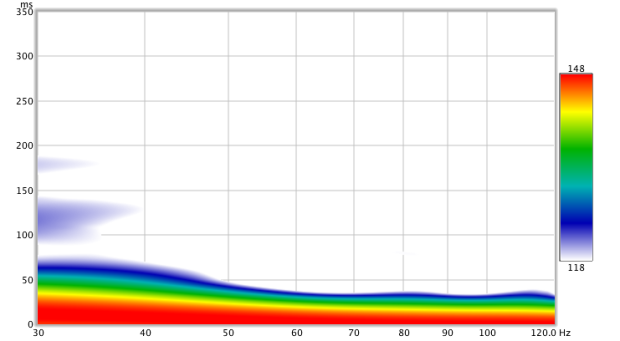
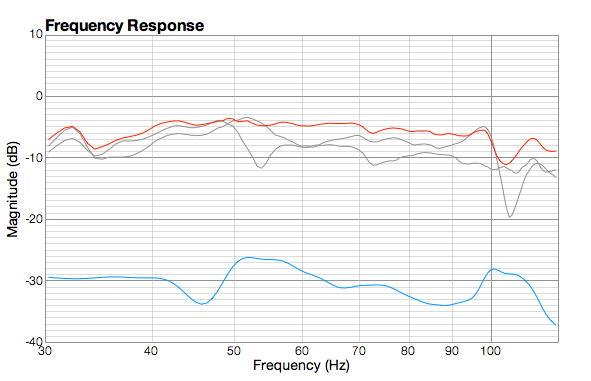
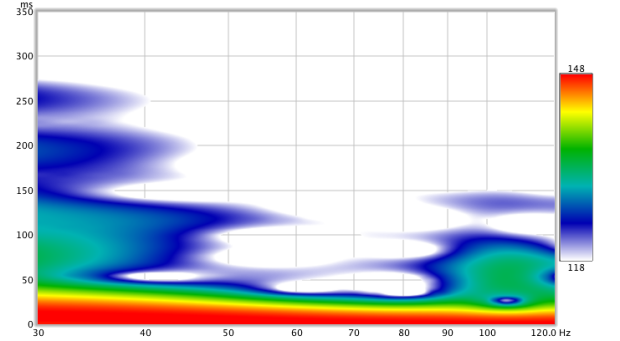
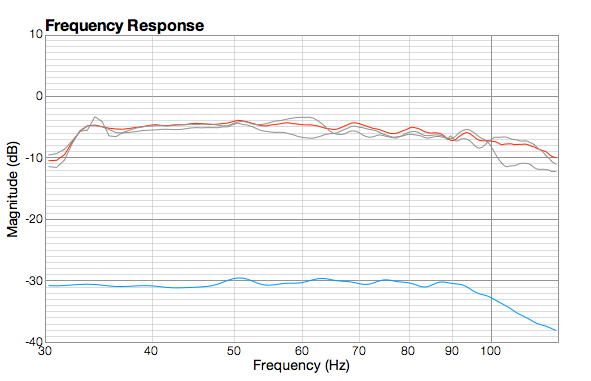
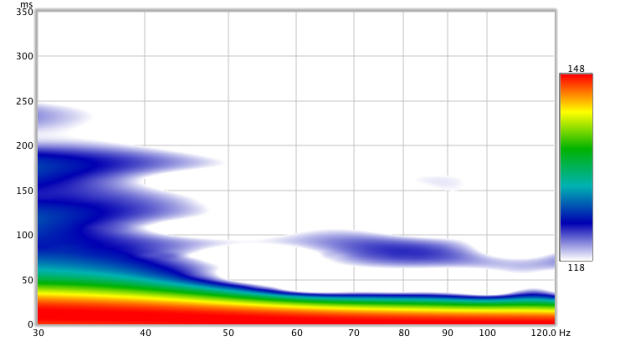
Discussion
The frequency response of the single monopole subwoofer (1) in the far field shows rather large differences between seats (here 30–40Hz and 100–120Hz). This is typical for such a configuration. The area from 50–100Hz is surprisingly smooth though. Once again this shows that every room is different and only measurements will reveal its specific characteristics.
The spectrogram shows a considerable amount of modal ringing.
Adding a second monopole subwoofer (2) eliminates the large swings at 30–40Hz and 100–120Hz at the expense of making the frequency response worse in between. Nevertheless this is a rather good result and shows how adding low frequency sources reduces overall seat-to-seat differences.
The behavior in the time domain is slightly worse than the single subwoofer case suggesting that the locations for the subwoofers are not optimal.
When placing a single subwoofer in the near field (3 & 4), the direct sound field dominates and detrimental contributions from the room are greatly reduced. Spectrograms show virtually no modal ringing. There's still some room interaction visible in the frequency response of the monopole subwoofer whereas the dipole subwoofer response is remarkably smooth and doesn't show much room effects at all.
Two subwoofers in the near field (5 & 6) remove level differences between the 3 mic locations while improving frequency response and maintaining very low modal ringing.
Virtually no equalization was needed for the dipoles (see blue curves in frequency plots). It's unclear if this can be generalized. Additional data is needed.
The efficiency of a subwoofer is increased by about 10dB when placed in the near field. There's an additional gain of 6dB when a second near field subwoofer is added.